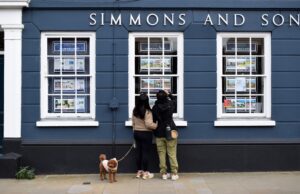UK house prices rose for a fifth consecutive May, hitting a new record as sellers raced to list properties before the new lower stamp duty threshold took effect.
According to the latest figures from Rightmove, average new asking prices increased by £2,335 in May — a 0.6% monthly rise, taking the national average to a record-high £379,517. However, it was the smallest May increase since 2016, reflecting a cooler market favouring buyers.
Rightmove said the rise was driven largely by a 14% surge in new property listings, the highest level in a decade. The increase in supply has intensified competition among sellers, while buyer demand has softened due to higher mortgage rates, global trade uncertainty, and recent changes to stamp duty thresholds.
“This month’s price increase being the lowest in May for nine years is a sign of a market that favours buyers,” said Colleen Babcock, property expert at Rightmove. “Sellers need to be aware of the level of competition they’re facing for the attention of buyers.”
Buyers cautious amid economic uncertainty
Despite the overall rise in listing prices, demand dipped in April following the reduction in stamp duty thresholds in England and Northern Ireland. According to Nationwide, average house prices fell 0.6% last month.
Uncertainty surrounding President Trump’s tariff policies, as well as anticipation of a Bank of England interest rate cut, contributed to subdued market activity. However, May has seen demand begin to recover, aided by the Bank’s rate cut to 4.25%, which in turn has helped push the average two-year fixed mortgage rate down to 3.72% — from 4.75% a year ago.
The UK housing market has proven remarkably resilient, despite fears of recession and a multi-year cycle of rising interest rates. According to the Office for National Statistics, house prices were up 5.4% year-on-year in February to an average of £268,000.
Knight Frank forecasts a 3.5% rise in house prices for 2025, supported by falling interest rates and gradually improving real household incomes.
“We’re seeing more homes coming to market due to landlords exiting, homeowners trying to beat stamp duty changes, and vendors revisiting plans delayed by last year’s political uncertainty,” said Tom Bill, head of UK residential research at Knight Frank.
While price momentum remains positive, the UK’s housing supply pipeline is under pressure, with the government’s 300,000 homes per year target now in doubt.
Hamptons reports that off-plan sales fell to 31% in 2024 — the lowest since 2012, and well below the 49% peak seen in 2016.
“Housebuilders rely on forward funding to progress on-site,” said David Fell, analyst at Hamptons. “Falling off-plan demand, especially from small landlords, threatens future delivery — and puts Labour’s housebuilding ambitions at risk.”
As the market enters the summer months, buyers and sellers alike will be closely watching interest rate trends, policy developments, and inflation to gauge how long this latest price run can continue.
Read more:
UK house prices rise in May for fifth year running amid rush to beat stamp duty deadline

